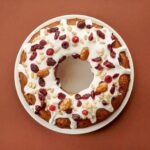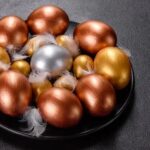Planning for a decorated cake involves more than just creating a delicious confection – it’s about turning it into a stunning work of art. Whether you’re celebrating a special occasion or simply want to add some flair to your dessert table, mastering the art of decorating cakes can elevate your baking game.
In this guide, we will explore the essential steps and tips on how to plan for a decorated cake that not only tastes amazing but also looks visually appealing.
When it comes to creating a decorated cake, selecting the perfect flavor and type is crucial as it sets the foundation for your design. From classic vanilla to decadent chocolate, each flavor can complement your chosen decorations. Additionally, choosing the right frosting and filling is equally important as they contribute to both the taste and texture of your cake. By considering these elements early in your planning process, you can ensure that every component works harmoniously together.
To achieve professional-looking results with your decorated cake, understanding different decorating techniques is key. Whether you prefer working with fondant for a smooth finish, piping for intricate designs, or adding edible decorations for an extra pop of color, each method offers unique options for customization. By exploring these techniques and finding the ones that resonate with your vision, you can bring your cake design ideas to life with confidence and creativity.
Choosing the Perfect Cake Flavor and Type for Decoration
When it comes to planning for a decorated cake, one of the crucial decisions you’ll need to make is choosing the perfect cake flavor and type. The flavor of your cake will set the foundation for the overall design and aesthetic, so it’s essential to select something that complements your chosen theme.
Whether you opt for classic flavors like vanilla or chocolate, or more unique options like red velvet or lemon, consider what will not only taste delicious but also enhance your decorative elements.
Considering the Type of Cake
In addition to selecting a flavor, you’ll also need to decide on the type of cake that will best suit your decoration plans. Different types of cakes have varying textures and densities, which can affect how well they hold up under certain decorating techniques.
For elaborate designs that require intricate detailing, a dense and sturdy cake like pound cake or butter cake may be more suitable. On the other hand, if you’re looking for a light and fluffy base for your decorations, a sponge cake or chiffon cake could be the way to go.
Matching Flavor With Design
It’s important to consider how the flavor and type of your chosen cake will align with your design concept. For instance, if you’re going for a whimsical and colorful design, a funfetti or rainbow-colored cake can add an extra element of surprise when sliced open.
On the other hand, if you’re aiming for a more elegant and sophisticated look, a rich chocolate ganache-filled cake could complement floral decorations beautifully. By carefully matching your flavor choice with your design vision, you can create a truly cohesive and memorable decorated cake.
Selecting the Right Frosting and Filling for Your Cake Design
When it comes to planning for a decorated cake, one of the key components to consider is selecting the right frosting and filling for your cake design. The type of frosting and filling you choose can greatly impact the overall taste, texture, and appearance of your finished creation. There are numerous options available, so it’s important to carefully consider what will work best with your chosen cake flavor and decorating techniques.
One popular choice for frosting is buttercream, which is known for its creamy texture and ability to hold intricate designs when piped. Buttercream comes in various flavors and can be easily colored to match your desired color scheme. Another option is fondant, a smooth sugar paste that creates a clean canvas for detailed decorations. Fondant is often used for sculpted cakes or designs that require a more polished look.
As for fillings, there are countless possibilities ranging from fruity jams to rich chocolate ganache. The key is to choose a filling that complements the flavor of your cake without overpowering it. Consider factors such as texture, sweetness level, and compatibility with any other elements in your design. By carefully selecting the right frosting and filling combination, you can enhance the overall taste and visual appeal of your decorated cake.
Understanding Different Decorating Techniques
When it comes to decorating a cake, there are various techniques that you can use to achieve stunning and professional-looking results. Understanding different decorating techniques such as fondant, piping, and edible decorations is essential in creating a beautifully decorated cake that will impress your guests. Each technique offers unique possibilities for adding texture, color, and creativity to your design.
Working With Fondant
Fondant is a versatile and popular choice for decorating cakes due to its smooth finish and ability to be molded into intricate designs. To work with fondant effectively, it is important to knead it until it is pliable and roll it out evenly using a rolling pin.
You can then cover your cake with fondant, smoothing out any wrinkles or air bubbles for a flawless look. Fondant can also be shaped into figures, flowers, or other decorative elements to enhance your design.
Mastering Piping Techniques
Piping is another essential skill in cake decoration that involves using a pastry bag filled with frosting to create intricate designs on the surface of the cake. Different piping tips can be used to achieve various patterns such as swirls, rosettes, borders, and lettering. Practice different pressure techniques and movements to control the flow of frosting and create precise details on your cake. Experiment with different piping tips and colors to add dimension and visual interest to your design.
Incorporating Edible Decorations
Edible decorations such as candy pearls, sprinkles, edible glitter, and chocolate shavings can add an extra layer of creativity and texture to your decorated cake. Consider incorporating edible flowers, fresh fruit slices, or handmade sugar decorations for a unique touch. Be mindful of color coordination and balance when choosing edible decorations to complement your overall theme and color scheme. Experiment with different placement arrangements to see what works best for enhancing the visual appeal of your cake design.
By understanding how to work with fondant, mastering piping techniques, and incorporating various edible decorations into your design, you can elevate the overall look of your decorated cake. Experimenting with different decorating techniques will not only enhance your skills but also unleash your creativity in creating show-stopping cakes for any occasion.
Remember that practice makes perfect when it comes to mastering these techniques, so don’t be afraid to try new things and push yourself creatively when planning for a decorated cake.
Planning Your Cake Design
When it comes to planning the design of your decorated cake, one of the first steps is choosing a theme that will guide your overall aesthetic. Whether it’s a birthday celebration, wedding, baby shower, or any special occasion, the theme will set the tone for your cake design.
Consider the interests and preferences of the recipient or event honoree when selecting a theme. For example, if it’s a child’s birthday party, you could opt for a fun and colorful theme with playful decorations like toy figurines or edible glitter.
Once you have decided on a theme, it’s important to choose a color scheme that complements it. Think about colors that are associated with the theme or ones that evoke certain emotions like happiness, elegance, or warmth.
Creating a color palette can help you stay organized and ensure that your cake design looks cohesive and visually appealing. Consider using pastel shades for a soft and romantic look, bold hues for a vibrant and eye-catching design, or metallic colors for an elegant and luxurious finish.
In addition to theme and color scheme, paying attention to the overall aesthetic of your decorated cake is crucial for achieving professional results. Think about the balance of elements on your cake such as textures, shapes, sizes, and spacing. You can create visual interest by incorporating different design elements like patterns, layers, accents, and embellishments.
Experiment with various combinations to see what works best for your specific design concept. By carefully planning these aspects of your cake design, you can ensure that your finished creation is not only visually stunning but also conveys the message or sentiment you intend to express through your masterpiece.
Investing in Quality Tools and Ingredients for Professional Results
When it comes to creating a beautifully decorated cake, one of the most important aspects to consider is the quality of tools and ingredients you use. Investing in high-quality tools and ingredients can truly make a difference in the final outcome of your cake design. Here are some key items to consider when planning for a decorated cake:
- Quality Bakeware: Start with sturdy cake pans that heat evenly and are easy to clean. Investing in quality bakeware will ensure that your cakes bake uniformly and release easily from the pan.
- Fine Ingredients: Use fresh, high-quality ingredients like butter, flour, sugar, and eggs for the best texture and flavor in your cake. Opt for pure extracts and high-grade cocoa powder or chocolate for rich, decadent desserts.
- Professional Decorating Tools: Consider investing in piping bags, tips, offset spatulas, fondant smoothers, and other professional decorating tools to elevate your cake designs. These tools can help you achieve precise details and smooth finishes on your cakes.
Additionally, don’t forget about the importance of food coloring gels or powders to achieve vibrant hues in your frosting or fondant. By using top-notch tools and ingredients, you’ll set yourself up for success in creating professional-looking decorated cakes that not only taste delicious but also visually stunning.
Remember that as you plan for a decorated cake, it’s essential to have these quality items on hand before you start baking and decorating. Taking the time to invest in these essentials will not only improve the overall outcome of your creations but also enhance your skills as a baker and decorator. Prioritize quality tools and ingredients for professional results every time you embark on a new cake project.
Tips for Properly Preparing and Leveling Your Cake Layers for Decoration
Preparing and leveling your cake layers is a crucial step in creating a beautifully decorated cake. The key to a professional-looking cake starts with a level base. To ensure that your cake layers are even and uniform, there are several tips and techniques you can follow.
Firstly, it is essential to allow your baked cake layers to cool completely before attempting to level them. Attempting to level warm or hot cake layers can result in crumbling and uneven surfaces. Once the cakes have cooled, you can begin by using a long serrated knife or a cake leveler tool to trim off any domed tops. Take your time and work slowly, ensuring you maintain an even cut across the entire layer.
In addition to leveling your cake layers, it is also important to properly prepare them for decoration. This includes brushing off any loose crumbs and ensuring the surface is clean and free of debris.
You may also choose to brush each layer with a simple syrup or flavored simple syrup to add moisture and flavor before adding frosting or filling. By taking the time to properly prepare and level your cake layers, you will set yourself up for success when it comes time to decorate your masterpiece.
| Tips for Preparing Cake Layers | Details |
|---|---|
| Allow cakes to cool completely | This prevents crumbling during leveling |
| Use a serrated knife or cake leveler | To trim off any domed tops evenly |
| Brush off loose crumbs and prepare the surface | Ensuring a clean base for decorating |
Time Management Tips for Executing Your Decorated Cake Plan Successfully
Time management is crucial when it comes to executing a successful decorated cake plan. Properly allocating your time at each stage of the process will ensure that you can create a stunning cake without feeling rushed or overwhelmed. One of the first steps in managing your time effectively is to create a detailed timeline or schedule for the entire baking and decorating process. This timeline should include specific tasks, deadlines, and estimated times for completion.
When considering how to plan for a decorated cake, it’s important to factor in the time needed for each step, from baking and cooling the cakes to preparing the frosting and decorations. It’s also essential to set aside ample time for any unexpected issues that may arise during the decorating process.
By breaking down the entire project into smaller, more manageable tasks and setting realistic timeframes for each one, you can avoid last-minute stress and ensure a smooth execution of your design.
Another time management tip for executing your decorated cake plan successfully is to enlist help if needed. Whether it’s having someone assist with baking the cakes, preparing frosting, or helping with intricate decorations, having an extra set of hands can make the process more efficient.
Additionally, delegating certain tasks to others can free up more time for you to focus on the creative aspects of your cake design. Remember that proper planning and organization are key to staying on track and creating a beautifully decorated cake that exceeds your expectations.
| Time Management Tips | Benefits |
|---|---|
| Create a detailed timeline | Ensures smooth execution of tasks |
| Factor in time for unexpected issues | Avoids last-minute stress |
| Enlist help if needed | Makes the process more efficient |
By following these time management tips and staying organized throughout the planning and execution stages of your decorated cake project, you’ll be well-equipped to create a masterpiece that not only looks beautiful but also tastes delicious. Remember that patience and attention to detail are key components of successful cake decorating, so take your time, enjoy the process, and savor the satisfaction of presenting a stunning creation to your friends and family.
Troubleshooting Common Cake Decoration Mistakes and How to Fix Them
Decorating a cake can sometimes be challenging, especially for beginners. Mistakes happen, but learning how to troubleshoot common cake decoration mistakes can help you salvage your beautiful creation. One common issue is air bubbles in your fondant or buttercream frosting. To fix this, simply use a small pin or needle to carefully poke the bubble and then gently smooth out the area with your finger or a decorating tool.
Another frequent problem is cracked fondant when covering a cake. This can be caused by rolling out the fondant too thin or not kneading it enough before placing it on the cake. To remedy this, try gently warming the fondant with your hands and smoothing it over the cracks with a fondant smoother or by lightly brushing on some water to help stick the pieces back together.
Uneven layers in your cake can also pose a challenge when decorating. To ensure perfectly level layers, invest in a good quality cake leveler or use a long serrated knife to trim any excess height from each layer.
Additionally, using a turntable while assembling and decorating your cake can help achieve even layers and smooth frosting application. By following these troubleshooting tips, you’ll be better equipped to handle any mishaps that may occur during the decorating process and create stunning cakes every time.
Showcasing Your Finished Decorated Cake
In conclusion, showcasing your finished decorated cake is the final step in the creative process of making a stunning dessert masterpiece. The presentation of your cake plays a crucial role in capturing the attention and admiration of your audience. Consider using cake stands, decorative plates, or themed props to enhance the overall look of your creation. Remember that first impressions are key, so take the time to carefully arrange your cake for maximum visual impact.
Photography is another essential aspect of sharing your decorated cake with the world. Invest in good lighting and props to highlight the intricate details of your design. Experiment with different angles and perspectives to capture the beauty of your creation from all sides. High-quality photos can help showcase your skills and attract potential clients or customers.
Finally, social media has become a powerful tool for sharing your decorated cakes with a wider audience. Take advantage of platforms like Instagram, Facebook, and Pinterest to showcase your work and connect with fellow bakers and enthusiasts.
Use relevant hashtags, engage with followers, and respond to comments to increase visibility and build a strong online presence. By following these tips on how to plan for a decorated cake and effectively showcasing your finished product, you can truly elevate your baking skills and creativity to new heights.
Frequently Asked Questions
How Far in Advance Can You Bake a Cake Before Frosting?
You can typically bake a cake in advance and store it unfrosted for up to two days. This allows the cake to cool completely before frosting, which helps prevent the frosting from melting or sliding off.
Can I Decorate a Cake 2 Days in Advance?
Decorating a cake two days in advance is possible, but it’s important to consider the type of frosting you’re using. Buttercream and cream cheese frostings can be decorated in advance, but fresh fruit or whipped cream toppings are best added closer to serving time for freshness.
How Do You Prepare a Cake for Decorating?
Before decorating a cake, it’s crucial to ensure that the cake is cooled completely to prevent frosting from melting. Leveling the cake layers with a serrated knife and adding a crumb coat of frosting will create a smooth base for decorations. Additionally, chilling the cake before decorating can make it easier to work with and help the frosting set.

Welcome to my blog about home and family. This blog is a place where I will share my thoughts, ideas, and experiences related to these important topics. I am a stay-at-home mom with two young children. I hope you enjoy reading it! and may find some helpful tips and ideas that will make your home and family life even better!





